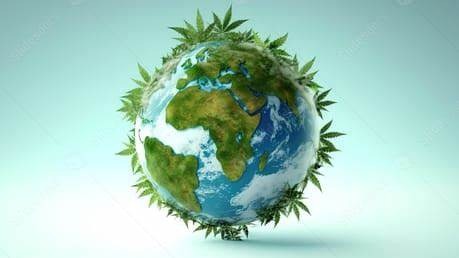The Global Grassroots
Hemp Around the World
In The Weeds
10/5/20203 min read


While the U.S. was busy fumbling hemp legalization like a fumbled football, the rest of the world was quietly building an empire out of stalks and seeds. From sleek German cars using hemp bioplastics to entire French villages built with hempcrete, the global hemp movement isn’t coming—it’s already here. And it’s not just a trend. It’s a paradigm shift rooted in sustainability, innovation, and a whole lot of common sense.
Let’s start in Europe, where hemp never really left. France, for example, has been growing it continuously for centuries—legal, regulated, and respected. It’s used in insulation, textiles, even as a key component in lightweight construction. You can walk into a hardware store in rural Normandy and pick up hempcrete blocks like they’re bags of potting soil. Try that at your local Home Depot.
In Germany, luxury auto brands like BMW and Mercedes-Benz use hemp fibers in their door panels and dashboards. Why? Because it’s strong, lightweight, and reduces reliance on petroleum-based materials. Eco-luxe? That’s the vibe.
Then there’s China—currently the world’s largest producer of hemp. They’ve invested heavily in hemp textiles, CBD extraction, and high-yield cultivation. Despite tight cannabis laws, industrial hemp is booming. We’re talking government-backed research labs and sprawling fields of high-grade hemp, all feeding a global supply chain that shows no sign of slowing down.
Across the Himalayas, India has a long, spiritual relationship with cannabis and hemp. Bhang, a traditional drink made from cannabis leaves, is still used in religious ceremonies and festivals like Holi. But the modern moment is catching up. Startups in Uttarakhand and Himachal Pradesh are working with local farmers to revive hemp as a supercrop for textiles and wellness.
Meanwhile in South America, Colombia is emerging as a hemp powerhouse thanks to ideal growing conditions and progressive regulations. Hemp cultivation is being paired with social equity programs to provide jobs for communities transitioning away from illicit crops. In a poetic twist, a plant once criminalized is now driving regeneration.
Australia and New Zealand are on the move, too, with growing markets for hemp seed oil, extract powder, and sustainable food products. In fact, Aussie-grown hemp protein is showing up in smoothies from Sydney to San Francisco.
Africa’s hemp story is just beginning, but it's full of promise. Countries like South Africa, Zambia, and Lesotho are opening up to industrial hemp and cannabis cultivation. With vast arable land and a need for eco-friendly cash crops, the continent could be a future epicenter for hemp production—with a focus on equity and empowerment.
Back in North America, Canada gets a gold star for playing the long game. They federally legalized industrial hemp in 1998 and cannabis in 2018. Today, Canadian companies are global exporters of hemp oil extract, wellness balms, and advanced cannabinoid research.
What ties all these places together is simple: hemp’s versatility. It’s not just a crop—it’s a system. A way to rethink what we eat, wear, drive, build with, and heal from. And while each country’s approach differs, the underlying ethos is the same—do more with less, and leave the planet better than you found it.
The U.S. is catching up, sure, but we’ve got some serious ground to cover. Global leaders are innovating at breakneck speed, supported by governments, universities, and billion-dollar industries. If we want to compete, we need to stop treating hemp like a novelty and start treating it like the industrial workhorse it is.
So whether you’re slathering on some hemp massage oil, sipping a CBD latte, or investing in hempcrete housing, remember: this is bigger than trends. This is a global grassroots renaissance—one field, fiber, and formula at a time.


